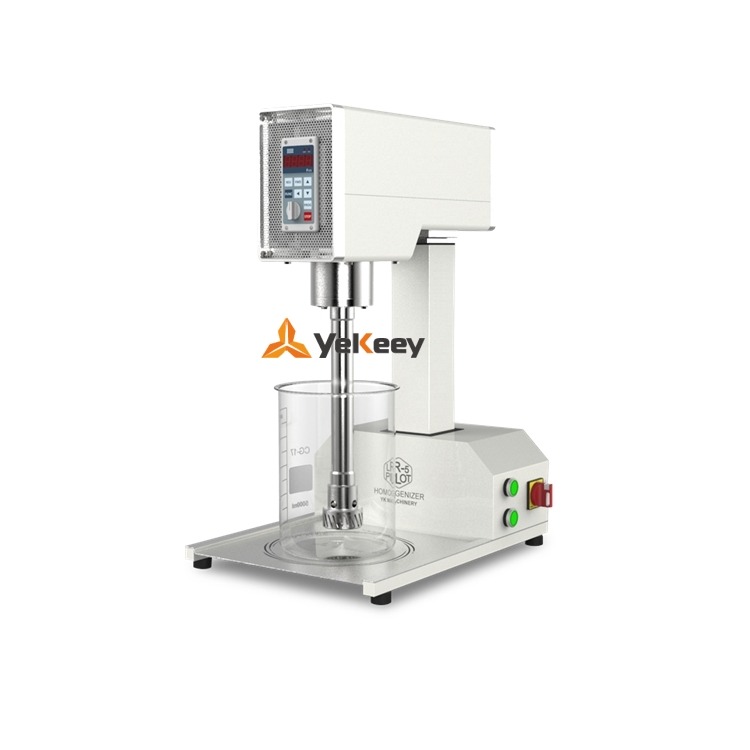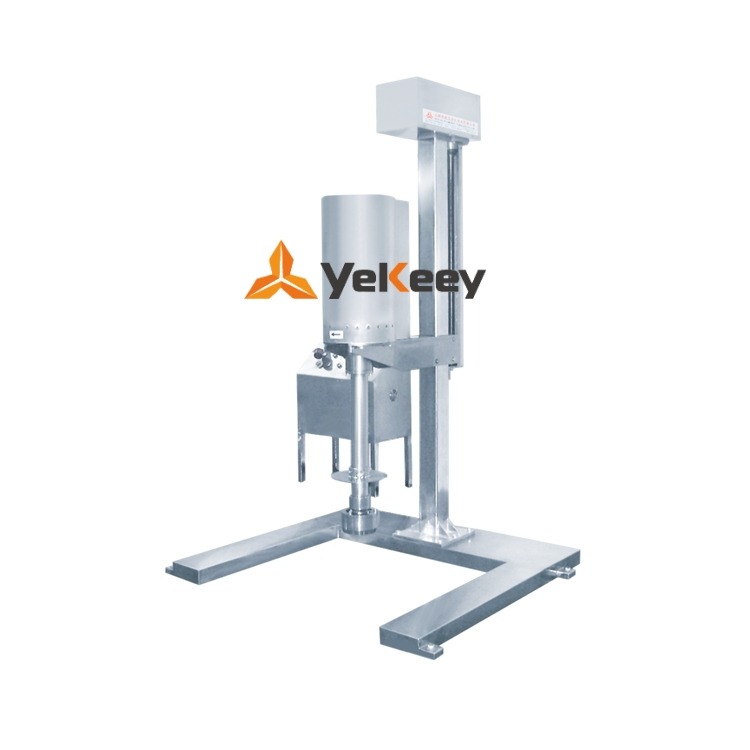-
There are 4 differences between homogenization and emulsification in the following aspects:
(1) Composition: Homogenization refers to the mixing of substances of different components through physical and chemical means, while emulsification is an emulsion mixture formed by the action of emulsifiers on two immiscible liquid phases.
(2) Stability: Emulsification is a mixture of two phases and belongs to a thermally unstable system, while homogeneous solutions belong to a thermally stable system.
(3) Layering: Emulsification may experience layering over time, while homogeneous mixtures can maintain a stable and uniform distribution for a long time.
(4) Operation method: Emulsification can be achieved by adding emulsifiers and stirring with a homogenizer.
2. The concept of homogeneity
- Homogenization refers to the process of micronizing and homogenizing the dispersed substances in a suspension or emulsion. This processing process can reduce the scale of dispersed substances and improve their distribution uniformity.
- Homogenization is mainly carried out through homogenizers and is an important processing equipment in the food, dairy, and beverage industries.
- Homogenization plays an increasingly important role in modern food processing industry as it can bring higher quality and higher grade food. For example, in dairy processing, homogenizers are used to break down the fat in milk into smaller particles, thereby making the entire product system more stable.
- According to the type of energy used and the characteristics of the mechanism, homogenizers can be divided into two categories: rotary and pressure type.
-
The concept of emulsification
- Emulsification is a phenomenon in which a liquid is uniformly dispersed in extremely small droplets in another immiscible liquid. Emulsification is a liquid-liquid interface phenomenon where two immiscible liquids, such as oil and water, are divided into two layers in a container, with less dense oil on the upper layer and more dense water on the lower layer. If appropriate surfactants are added and stirred strongly, the oil is dispersed in water to form an emulsion, which is called emulsification.
- Emulsification has been applied in various products such as cosmetics, food, and medicine, as it can make the interface between oil and water more stable, making the mixture easier to use and store. Meanwhile, emulsification can also improve the texture and touch of the product, making it more comfortable and easy to use.
-
When choosing a homogenizer, the following factors need to be considered:
(1) Minimum trial quantity: The smaller the minimum trial quantity of the homogenizer, the better, as it can save materials.
(2) Homogeneous pressure: For general materials, the higher the pressure, the smaller the particle size of the material can be processed, but higher pressure is not necessarily better, as certain materials may produce agglomeration under high pressure.
(3) Processing effect: The user hopes that the material produced can reach the nanometer level and be evenly distributed.
(4) Equipment structure: The homogenizer mainly consists of a frame, motor, reducer, mixing shaft, and agitator. According to different usage scenarios, different agitators and mixing shaft forms can be selected, such as push type agitator, propeller type agitator, anchor type agitator, etc. In addition, different homogenizers have their own characteristics, for example, some homogenizers have explosion-proof, anti-corrosion and other functions, which need to be selected according to actual usage needs.
-
When choosing an emulsifier, the following factors need to be considered:
(1) The purpose and required emulsification materials of the emulsifier: Different emulsifiers are suitable for different materials, and the appropriate emulsifier needs to be selected according to the required emulsified materials. For example, some emulsifiers are suitable for processing high viscosity materials, while others are suitable for processing low viscosity materials.
(2) Performance parameters of emulsifying machine: The performance parameters of emulsifying machine include the structure, speed, power, sealing performance, etc. of the emulsifying head, and suitable performance parameters need to be selected according to actual needs.
(3) Reliability of emulsifier: Choosing a reliable emulsifier can ensure production stability and efficiency, and it is necessary to choose products from reputable brands and manufacturers.
(4) Maintenance and upkeep of the emulsifier: It is necessary to consider the maintenance and upkeep costs of the emulsifier, as well as whether it is convenient to repair and replace components.
(5) The price of emulsifiers: It is necessary to choose a suitable emulsifier based on the budget, while considering the cost-effectiveness and long-term operating costs of the emulsifier.
Contact us, YeKeey will supply you the most suitable emulsification machine/homogenizer for you.









What i dont understood is in reality how youre now not really a lot more smartlyfavored than you might be now Youre very intelligent You understand therefore significantly in terms of this topic produced me personally believe it from a lot of numerous angles Its like women and men are not interested except it is one thing to accomplish with Woman gaga Your own stuffs outstanding Always care for it up